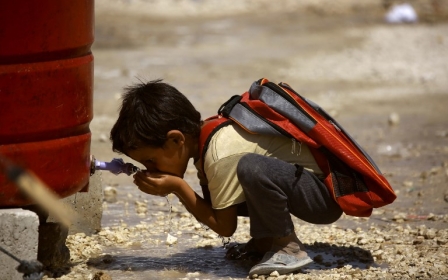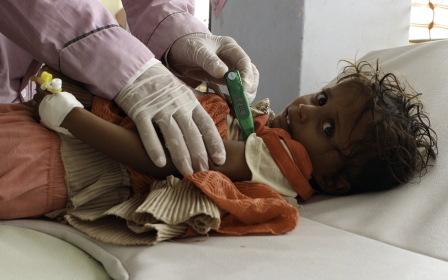One in five children across Middle East need immediate help: UNICEF

Wars raging across the Middle East and North Africa mean that nearly one in five children across the region need immediate humanitarian assistance, according to new analysis by UNICEF.
The war in Syria has left 12 million children within Syria and in refugee hosting countries in need of assistance, while in Iraq heavy fighting between the Islamic State group and Iraqi ground forces backed by the US-led coalition in Tal Afar and Mosul means that five million children lack access to clean water, sanitation, healthcare and secure living conditions.
“Conflict continues to rob millions of girls and boys of their childhood. Decades of progress are at a risk of being reversed across the Middle East and North Africa,” said Geert Cappelaere, UNICEF regional director.
Conflict continues to rob millions of girls and boys of their childhood
- Geert Cappelaere, UNICEF Regional Director
“Children in the Middle East and North Africa region have undergone unprecedented levels of violence and witnessed horrors that no one should witness. If violence and wars continue, the consequences- not only for the region- but for the world as a whole will be dire need,” she added.
“World leaders must do much more to put an end to violence for the sake of boys and girls and their future” said Cappelaere.
Children have been hardest hit by ongoing years of violence and displacement and the targeting of civilian infrastructure, including hospitals and water installations has exposed them to risk of death and diseases.
The fighting in Yemen has destroyed water and sanitation systems, sparking the world’s worst cholera and acute watery diarrhea outbreak with over 610,000 cases to date. While in Syria an estimated 2 million children live in hard-to reach or besieged areas with limited access to humanitarian relief.
Last week, Save the Children said one million children in Gaza are living in “dire conditions”.
Power shortages imposed by the Palestinian authority and Israel on the densely packed occupied territory mean that schools are unable to function and water treatment plants unable to work.
"Sxity percent of the sea around Gaza is contaminated with untreated sewage and over 90 percent of water sources too contaminated for human consumption,” the UK-based NGO said in a statement.
The conflicts across Middle East and North Africa have also inflicted deep social wounds, Cappelaere added.
“With no end in sight to these conflicts and with families’ dwindling financial resources, many have no choice but to send their children to work or marry their daughters early. The number of children affiliated with the fighting has more than doubled,” she said.
New MEE newsletter: Jerusalem Dispatch
Sign up to get the latest insights and analysis on Israel-Palestine, alongside Turkey Unpacked and other MEE newsletters
Middle East Eye delivers independent and unrivalled coverage and analysis of the Middle East, North Africa and beyond. To learn more about republishing this content and the associated fees, please fill out this form. More about MEE can be found here.




